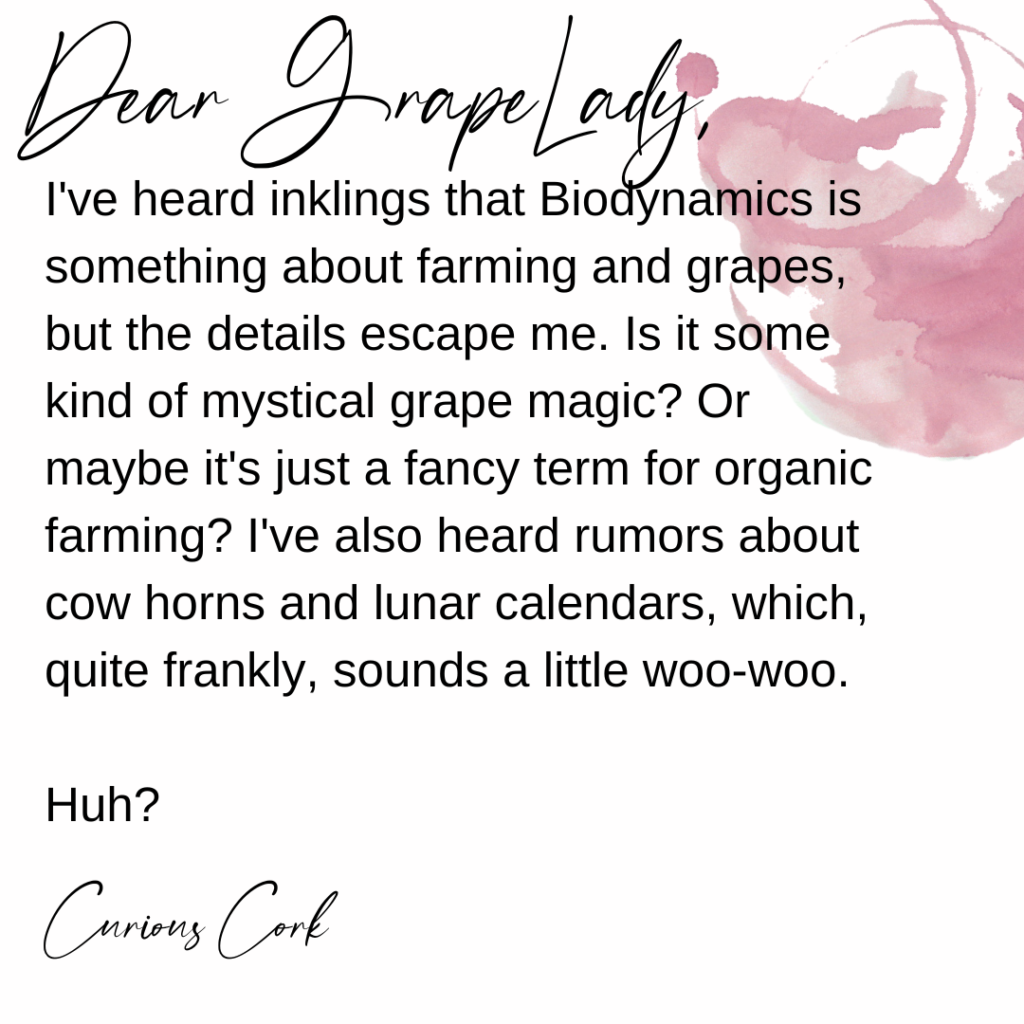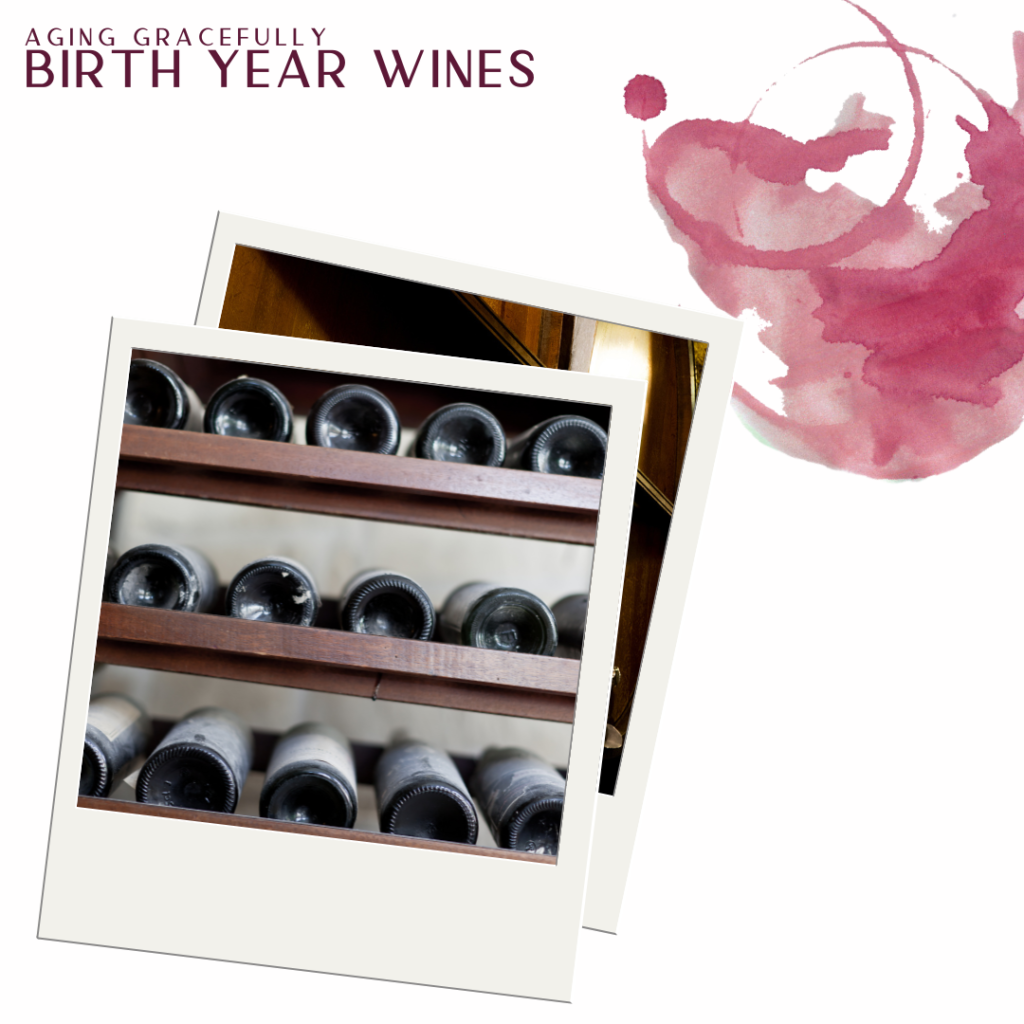
Curious Cork,
If you listen to Mike Benzinger, he describes biodynamics as an ‘energy management system,’ which still sounds confusing.
Biodynamics is rooted in the work of an Austrian philosopher named Rudolph Steiner. It’s a holistic farming practice that divides winemaking and viticultural tasks based on a special biodynamic calendar. The days of the year are categorized into four groups: Fruit Days (best for harvesting grapes), Root Days (ideal for pruning), Flower Days (days to leave the vineyard alone), and Leaf Days (optimal for watering plants). These days correspond to the four classic elements: earth, fire, air, and water.
In addition to this quirky calendar, other aspects of certified biodynamic winegrowing involve avoiding chemicals, commercial yeasts, and limiting sulfites to only up to 100 parts per million. But perhaps one of the weirdest aspects of biodynamic farming is how fertilization is done. Cow horns are filled with a special compost preparation and buried in the vineyard. These special preparations may include ingredients like yarrow blossoms, chamomile (a natural antiseptic), or stinging nettles (a natural cleanser).
Some wine enthusiasts argue that wines exhibit different facets of their character on different days. Flower and Fruit days are believed to showcase wines at their best, while Leaf and Root days are considered less enjoyable. Personally, I’m not entirely sure what to believe… I suppose I need to do some more tasting to form an opinion.
Care to join me?



